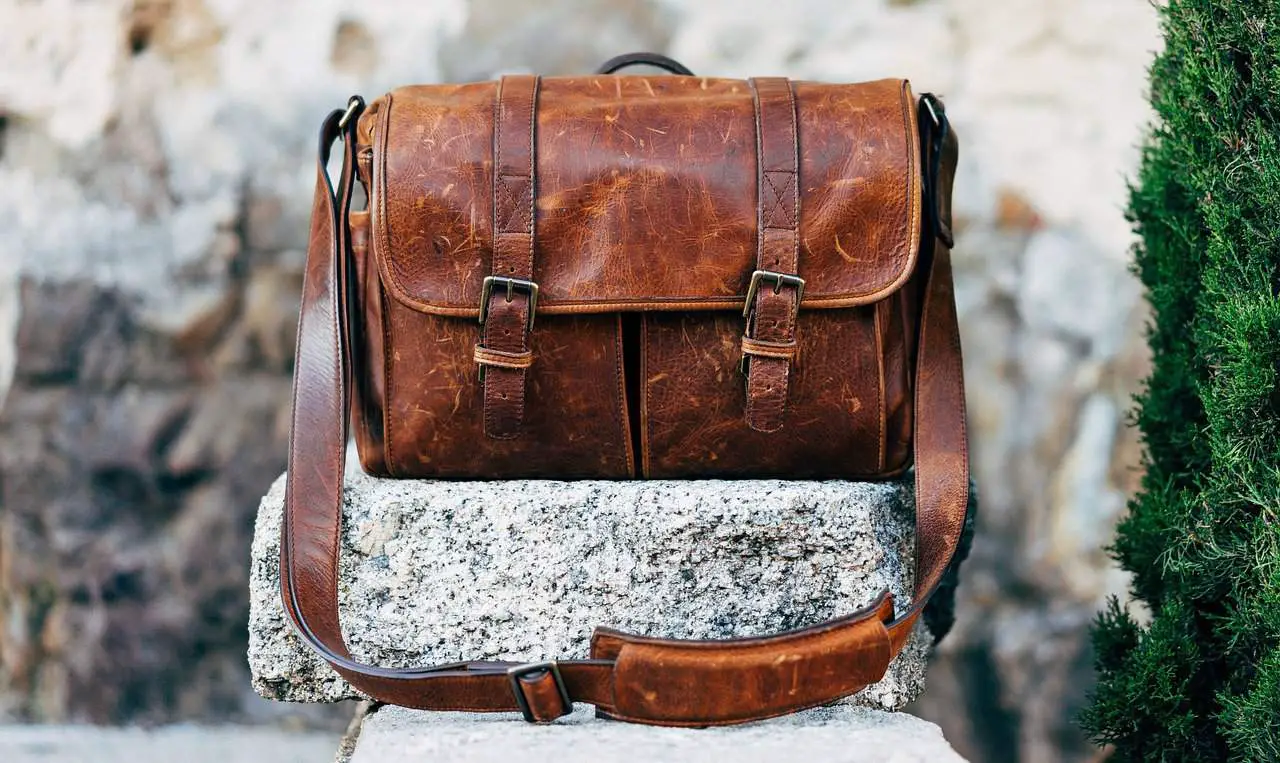Leather is one of the most durable materials there is. That is one of the many reasons that leather handbags have won the favor of so many fashion-conscious people around the world.
Sadly, it’s not uncommon for leather bags to accumulate mold over time. Especially if the bag hasn’t been used in a while. But, with the proper cleaning agent and method, an old leather bag with mold can be restored to its former glory.
Mold can be cleaned off the surface of a leather bag using saddle soap, rubbing alcohol, vinegar, baking soda, and lemon juice. Prepare the bag by brushing it with a soft horsehair brush to remove any excess dirt and grime.
5 methods to clean mold from your leather bag?
Leather is a beautiful material and products made from leather often appear opulent. But maintaining this type of material can be very challenging. A leather bag is a beautiful accessory but it is prone to accumulating stains and damage throughout its lifetime. These stains, if left untreated, may cause mold to form on your beautiful leather bag.
Most people are unfamiliar with the appropriate method to clean a leather bag and may end up throwing it out as a result. Challenging as it may be, it’s not impossible to remove mold and mildew from a leather bag.
There are a few solutions that can be used to clean mold from a leather bag including, rubbing alcohol, vinegar, saddle soap, baking soda, and lemon juice.
Whichever cleaning agent you opt to use, you may also need to use a soft horsehair brush to gently massage the cleaning agent into the leather to help remove the mold and mildew from the surface.
1 Rubbing alcohol
Start by cleaning the area. Use a gentle soap such as baby shampoo and water to remove any additional dirt and grime. Allow the area to dry properly before applying the rubbing alcohol.
Rubbing alcohol is an excellent cleaning agent for mold. To start, you will need equal parts rubbing alcohol and water to make the solution. The ratio is 1:1. Use a dry, soft, fiber cloth and dab the cloth into the rubbing alcohol. Place the rubbing alcohol in a spray bottle and spray the mixture onto the affected area. Allow it to sit for 15 minutes.
Use a damp cloth to wipe the area. There may be areas that are stubborn and difficult to remove. Do not be tempted to apply pressure when removing the rubbing alcohol. Always be gentle as rubbing too hard may damage the leather.
2 Vinegar
Depending on how badly the mold has grown on the leather bag, you may want to first use a soft, horsehair brush to remove any excess mold from the surface of the bag.
Vinegar is another excellent cleaning agent. It is acidic and works wonders to remove the mold from the surface of the leather bag. It’s important to be mindful of how much vinegar you apply to the affected area. You don’t want to drench the bag in vinegar.
Start by diluting the vinegar with water at a 1:1 ratio. Add the mixture to a spray bottle. Spray the mixture onto a soft, dry, fiber cloth or sponge and use the cloth/sponge to dab the mixture onto the surface of the mold. Gently rub the mixture onto the affected area until the mold starts to disappear.
3 Saddle soap
Saddle soap has been designed as a cleaning agent for leather.
Prepare the leather bag by gently brushing the surface with a soft horsehair brush to remove any excess dirt and debris. Use a damp fiber cloth and moisten the infected area. Do not drench it in water.
Place a few drops of saddle oil on the damp cloth and gently work it onto the surface of the leather bag in small circular motions. When the entire surface area has been covered, gently wash off the excess soap and use a dry fiber towel to remove any excess moisture from the surface of the bag.
Allow the bag to dry in a shaded area with sufficient ventilation.
4 Baking soda
Baking soda is an inexpensive item that most people have in their kitchens. In addition, it is excellent at removing mold from leather surfaces. Simply sprinkle it over the affected area and allow it to sit overnight.
In the morning, use a soft horsehair brush and brush the baking soda and mold off the bag before using a soap and water solution to wipe the bag clean. Baby shampoo and water are great options that are gentle and won’t damage the leather.
5 Lemon juice
Lemon juice is an acidic cleaner that most people have in their homes. This method is very quick and effective.
It should be mixed with three parts water and one part lemon juice for a ratio of 3:1. Use a sponge and dap the mixture onto the affected area. There is no need to let the mixture sit. It should start working immediately. Gently rub until the mold starts to disappear.
Prevention is better than cure
While it isn’t always avoidable, there are measures that you can implement to help prevent mold from forming on your favorite leather bag. Firstly, storage is key. It’s important to ensure that your bag is stored in a shaded, dry area away from any moisture. Keep the area where you opt to store your bag well-ventilated to prevent mold from developing.
And, in the event that you have followed the right storage procedure and you still get mold on your bag, there are two things that you should never bring near your leather bag: acetone or cleaning agents with harsh chemicals.
What is mold and how does it form on a leather bag?
Before diving into the various cleaning methods, it’s important to understand what mold is and why it forms on leather handbags.
Mold is a type of fungus. This fungus thrives in wet, dark conditions. Leather bags should always be stored in a dry area that is shaded. All too often, leather bags are exposed to moist and damp conditions. This is the ideal condition for mold to develop on the surface of the bag.
Those dark and hairy patches on your leather bag are an indication of both mold and mildew forming on the surface of the bag. Typically, when mold does form on a bag, it usually only forms on the surface of the bag and not the interior. The closet is a common culprit when it comes to mold on your leather bag. The conditions in a closet are usually humid, hot, and dark. All too often, you may pull out an old leather bag from the back of the closet after years of storage, only to find that it has patches of mold on it.

